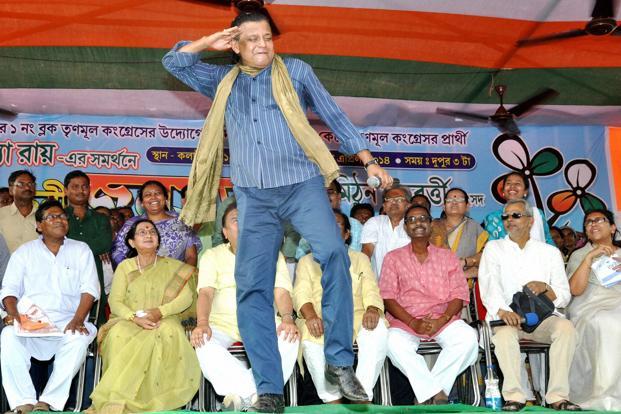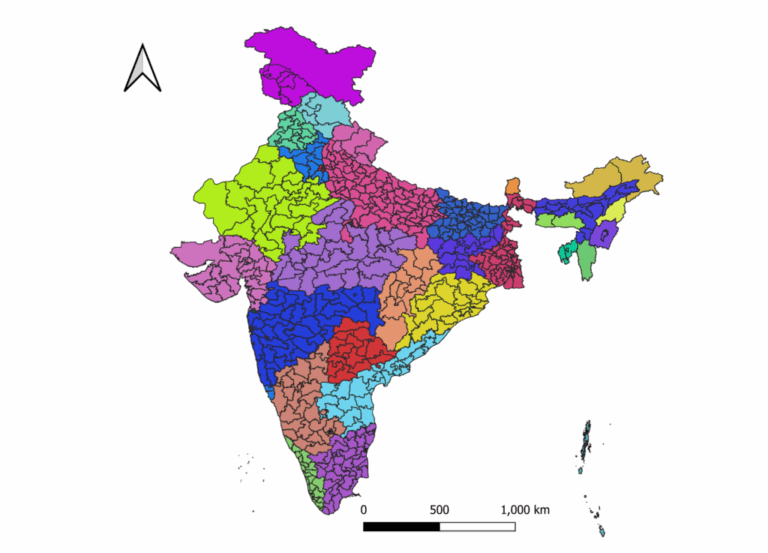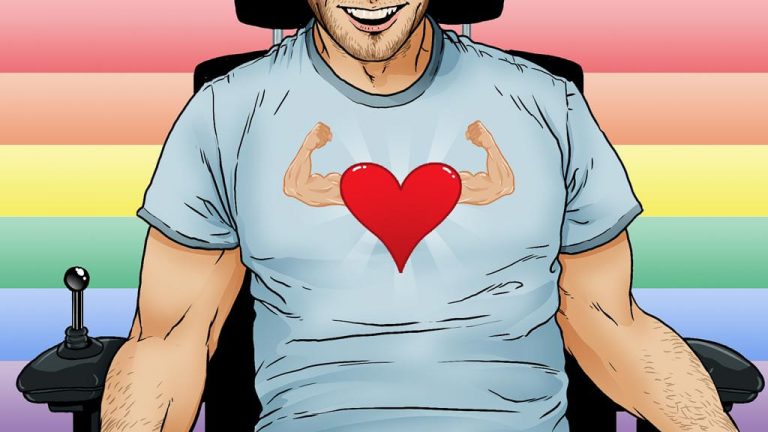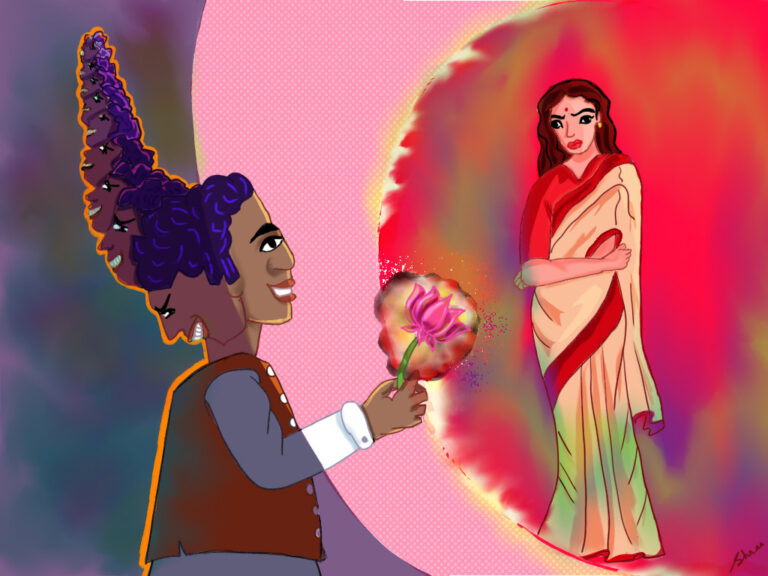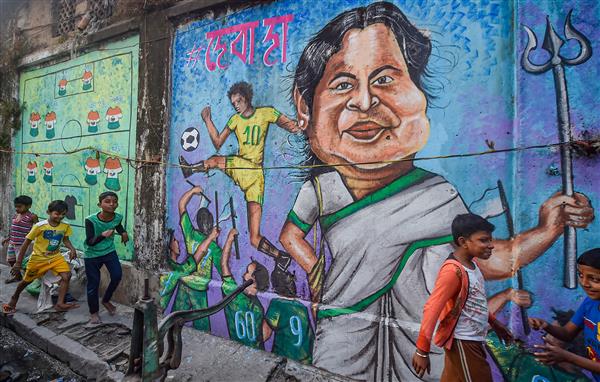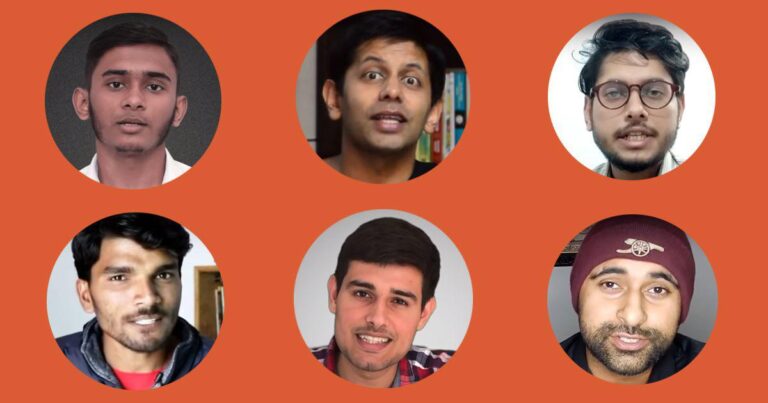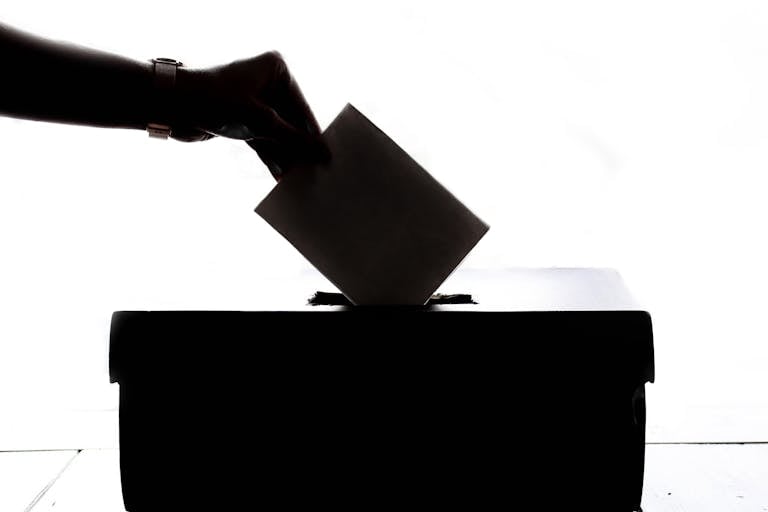How Celebrities got into Bengal politics
Aishi did her schooling from Diocesan School, securing the second position in the WBHSE examination (2018) and first in the Humanities section in the institution. She completed her graduation in Political Science from the St. Xavier’s College (Autonomous), Kolkata (2021). Her areas of interests include Indian Politics and Public Administration.
Politics became an integral part of the Bengali film industry and vice versa since 2011. Hence, active political participation by film personalities is comparatively a recent phenomenon. The interplay of glamour and politics becomes unique in the Bengali political system due to the shift from a star fan relationship to a politician voter one. Since 2011, West Bengal Politics is seen to have undergone an important change as compared to the earlier years. Since the mentioned timeline, there has been a noticeable trend in co-opting celebrity figures in the political party especially initiated by Trinamool Congress and later followed by the opposition parties too. From 2014 till date, a large number of celebrated public figures of the Bengali Film industry like Tapas Pal, Deepak Adhikary, Moon Moon Sen, and many others were fielded to contest elections in favor of TMC. And, worth mentioning, there has been a huge victory on the part of celebrity candidates compared to the mere politicians.
The Left Front reigned West Bengal for nearly 34 years. From the 1980s to the 1990s, these ten years were considered the Golden Age of Left Front Rule. However, due to certain reasons, this 34-year political regime met its collapse. According to Ranabir Samaddar, trade unions have neglected the ‘politics of production’, the way ‘governmentality’ operated in the state, and the manner in which the Left became the guardian of the status quo in the midst of cynicism, pettiness, corruption, and apathy. The misplaced sense of priority and too much stress on votes and populism also speak about opportunities, that the Left has lost. Hunger, peasant dispossession, changes in the social composition, and several other associated things became apparent then. These led to the growth of contentious politics. Samaddar predicted the fast-emerging power vacuum in Bengal. But, the Left ignored these signals as aberrations, because of a reign of passivity, too much party control, narrow thinking, and unimaginative party bureaucracy. (Ghosh, 2013)The most crucial reasons, according to Dwaipayan Bhattacharya, are the neglect of the Communist Party of India (Marxist) for the new class equation where the ethical stock of land reforms was depleting. CPI(M) also did not address the new anxieties of the rural population, failed to generate a new popular surge to address education, primary healthcare, and so on. Instead, the party mistook the triumph of 2006 for rapid industrialization by taking for grant the major rural support that it possessed i.e., it took away larger tracts of lands for establishing industries, factories, thus, expanding urban territories. The events of Singur, Nandigram, and Lalgarh during the last few years were also significant. The Communists became interested in a small car factory to be set up by the Tatas in Singur. The West Bengal government resorted to forcible acquisition of land by using the Colonial Act of 1894. (Sarkar, 2012) As a result, many small cultivators, sharecroppers switched their leanings from CPI(M) to Trinamool Congress (TMC) along with various rural committees that were set up to resist the government. Such a united opposition managed to considerably destabilize not only the left’s electoral base but more crucially its organizational grid. (Bhattacharya, 2010) Due to this scenario, Mamata Banerjee was seen to take away the throne from their own hands marking the end of the long-established regime of CPI(M). She grabbed the ruling crown of West Bengal in the 2011 Legislative Assembly Elections establishing her reign with the TMC party. TMC also pooled the Muslim votes towards itself as a result of the heinous crime case of Rizwan-Ur-Rahaman by fielding his brother, Rukban-Ur-Rahaman in the election. He became the MLA in 2011 and 2016 from Chapra Bidhan Sabha Constituency. After the 34 years of the political success of the Left, Mamata Banerjee with her one-woman army, TMC ushered in the next era with a completely new strategy to pool in more votes in their favor and sustain them in the Throne of West Bengal. Many famous faces of Bengal namely, Aparna Sen, Mamata Sankar, Shaoli Mitra, Arindam Sil, Subhaprashanna, Samir Aich, Sankha Ghosh became the mouthpiece of Banerjee with her famous slogan “Poribartan”.
There has always been a trend of blurring the line between the two contradictory fields, politics, and glamour, in India. In West Bengal, a similar fashion of blurring the line between them is seen since the inception of Trinamool Congress as the ruling government of the state in 2011. The celebs were never seen at the forefront of the Leftist vote campaigns. They were seen to support the Left ideology only during debates on television. Notable public figures like Chandan Sen, Sabyasachi Chakraborty, Badshah Maitra, and so on were seen to reflect their leanings towards Leftist ideology. The Left was never seen to follow the strategy to use the ‘Fame Face’ of the celebrities to pool vote banks that are seen to be employed by the TMC party. Utpal Dutt, another great personality, also known for his ultra-Leftist leaning had contributed majorly towards making ‘Jatra’ ideology, a vehicle for Leftist political and Post-colonial readings of history.
Hence, we can see that the fashion of celebrity or glamour employment in politics i.e.., Celebrity Politics is now also evident in the arena of West Bengal besides being already existent in the Indian context. For so long, the heated opposition of TMC, Bharatiya Janata Party (BJP) also did not emphasize celebrity politics especially in the context of Bengal. But, very recently, a similar type of trend can now be observed within the party too, reflecting on the deployment of celebrities in BJP with an intention to rein West Bengal.
Celebs in the ‘Tussle of election’ and their share of winnability
Celebrity is somehow related to power. Celebrities embody the audience and in that way provide pathways for the articulation of power and influence both by cultural industries and by comparison and adaptation to political institutions. (Marshall, 1997) John Street in his ‘Celebrity Politicians: Popular Culture and Political Representation’ spoke about celebrity politicians from two dimensions. One such dimension includes the elected politicians who have their basis in entertainment and make use of that face value and fame (Schwarzenegger, Ronald Reagan, etc) to gain power or to get elected and also the elected politicians who make use of celebrity associations to enhance their image and communicate their message. (Street, 2004) Considering this, where celebrities are been utilized to enhance the image and communicate a particular message to people, it might be because the politician or the political party feels a sense of alienation from the common people which can turn out to be a hindrance in their path to gain power. Henceforth, they use the face value, status, audience support of a renowned figure of popular culture to bridge the gap between the public and the party or politician. On behalf of them, that celebrity will act as a mediator to garner the relation between the ruling and the ruled. Also, by taking the advantage of the fame of the public figure, the political party can also attract that audience’s support in their own favor by deploying the star in their own group as a contestant of the election. In the same way, Chief Minister Mamata Banerjee had glitzed up the candidate list for the 2014 Lok Sabha, 2016 Bidhan Sabha, and 2019 Lok Sabha Elections by fielding a number of renowned faces from the Bengali Film industry who joined the election bandwagon and undoubtedly, the winnability of the celeb candidates have been comparatively more than their non-celebrity opposition candidates.
In the 2014 Lok Sabha Election in West Bengal, Superstar Dev (TMC) contested against Santosh Rana (CPI-M) from the Ghatal constituency where the former gained 6,85,696 votes while the latter polled 4,24,805 votes. From Rajganj, Actor Nimu Bhowmik (BJP) gained 2,03,131 votes against Md. Salim (CPI-M) who polled 3,17,515 votes. From Bankura, Moon Moon Sen (TMC) snatched 4,83,455 votes against the strong candidate Basudev Acharya (CPI-M) who gained 3,84,949 votes. In Medinipur, Actress Sandhya Roy (TMC) polled 5,80,441 votes in opposition to CPI-M’s Probodh Panda who achieved 3,95,313 votes. From Birbhum, Satabdi Roy (TMC) gained 4,60,568 votes against Dr. Ilahi Kamre Md. who polled 3,93,305 votes. Lastly, from Krishnanagar, Tapas Paul (TMC) gained 4,38,789 votes in opposition to Sanatanu Jha (CPI-M) with 3,67,534 votes.
In the 2016 Bidhan Sabha Election in West Bengal, Actress Deboshree Roy (TMC) polled 1,01,161 votes against Kanti Ganguly (CPI-M) with 99,932 votes from Raidighi. In Chowrangee, Nayna Bandopadhyay polled 55,119 votes in opposition to Somen Mitra (Congress) with 41,903 votes and lastly, from Barasat, Actor Chiranjit Chakraborty polled 99,667 votes against Sanjib Chattopadhyay (AIFB) with 74,668 votes.
In the 2019 Lok Sabha Elections, from Basirhat, Nusrat Jahan (TMC) achieved 7,82,078 votes against Sayantan Basu(BJP) with 4,31,709 votes. In the Jadavpur constituency, Mimi Chakraborty polled 6,88,472 votes in opposition to Anupam Hazra (BJP) with 3,93,233 votes. From Ghatal, Dev gained 7,17,959 votes against Ex-IPS Bharati Ghosh (BJP) with 6,09,986 votes. In Birbhum, Satabdi Roy achieved 6,54,077 votes in opposition to Dudhkumar Mondal (BJP) with 5,65,153 votes. From the Hoogly constituency, Locket Chatterjee (BJP) polled 6,71,448 votes against Ratna Dey Nag (TMC) with 5,98,086 votes and lastly, from the Asansol constituency, Moon Moon Sen(TMC) lost to Singer Babul Supriyo (BJP) with 6,33,378 votes.
What’s Next?
Mostly, due to the ‘Face Value’ of the celebrity personalities, the majority of voters got molded towards the agency or the Political party they represented. It can be deduced that even the heavy-weighted politicians who had genuinely and consistently worked hard for their constituencies fell prey to this new strategy of celebrity induction, for instance, Kanti Ganguly who contributed much during 2009 Aila in Sundarban area, unlike actress Deboshree Roy. In spite, of this, the latter won by a huge margin of votes by virtue of her celebrity image. An opposite scenario is also been observed in the case of Moon Moon Sen who won the 2014 election tussle due to her Face Value but she was never seen to be working for the development of her constituency and her attendance in the Parliament was also poor. Hence, the follow-up election of 2019 presented a disheartening picture to her. She was ruled out by the Asansol voters. Thus, reflecting general people are not that ignorant or emotional to be swayed away by their glamour quotient. They are quite politically aware of the benefits they receive. Earlier, it was seen that the rural people were mostly, if not all, apathetic towards political issues of the state. But later on, it is revealed that celeb candidatures hold not much weightage compared to the priority they attach with their development and security. Also, it can be said that substantive proportion of voters do not even take into account the aspect of the Face Value of celebrities when comes to their representation, for instance, Nimu Bhowmik (BJP) was outrightly denounced by his constituency in the first attempt (2014).
In 2021, for the Bidhan Sabha Elections, TMC again fielded a number of celebrity figures like Sayoni Ghosh, Kanchan Mullick, Raj Chakraborty, June Malia, Koushani Mukherjee, Sayantika Banerjee, and so on. The head-to-head opponent of TMC, i.e., BJP also incorporated many renowned public figures such as Bengal’s Luminary, Mithun Chakraborty, Payal Sarkar, Srabanti Chatterjee, Yash Dasgupta, Bonny Sengupta, and many more. Now it will be much interesting to see the stand of the Bengal People on the aspect of their choices in the upcoming 2021 West Bengal Assembly Elections – Celebrity candidacy or the Non-celebrity candidatures!
References
Ghosh, B. (2013). Review of ‘Passive Revolution in West Bengal, 1977-2011’, Ranabir Samaddar. Sage Publications, 160.
Sarkar, P. (2012). Winds Of Change The End of 34 years Of The Rule Of The Left In Bengal. Indian Political Science Association , 47.
Bhattacharya, D. (2010). Left in the Lurch: The Demise of the World’s Longest Elected Regime? Economic and Political Weekly, 52.
Marshall, D. (1997). Celebrity and Power: Fame in the Contemporary Culture. University of Minnesota Press, xxi.Street, J. (2004). Celebrity Politicians: Popular Culture and Political Representation. BJPIR, 437-38.
Image Credit: Live Mint


